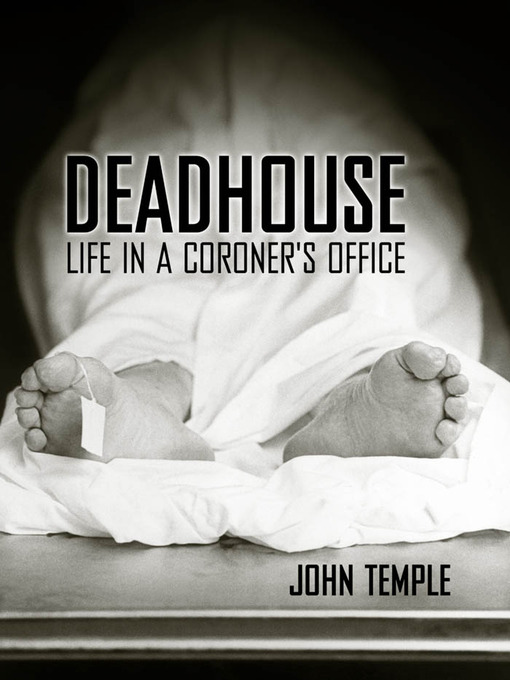Deadhouse: Life in a Coroner's Office chronicles the exploits of a diverse team of investigators at a coroner's office in Pittsburgh. Ed Strimlan is a doctor who never got to practice medicine. Instead he discovers how people died. Mike Chichwak is a stolid ex-paramedic, respected around the office for his compassion and doggedness. Tiffani Hunt is twenty-one, a single mother who questions whether she wants to spend her nights around dead bodies.
All three deputy coroners share one trait: a compulsive curiosity. A good thing too, because any observation at a death scene can prove meaningful. A bag of groceries standing on a kitchen counter, the milk turning sour. A broken lamp lying on the carpet of an otherwise tidy living room. When they approach a corpse, the investigators consider everything. Is the victim face-up or down? How stiff are the limbs? Are the hands dirty or clean? By the time they bag the body and load it into the coroner's wagon, Tiffani, Ed, and Mike have often unearthed intimate details that are unknown even to the victim's family and friends.
The intrigues of investigating death help make up for the bad parts of the job. There are plenty of burdens-grief-stricken families, decomposed bodies, tangled local politics, and gore. And maybe worst of all is the ever-present reminder of mortality and human frailness.
Deadhouse also chronicles the evolution of forensic medicine, from early rituals performed over corpses found dead to the controver-sial advent of modern forensic pathology. It explains how pathologists "read" bullet wounds and lacerations, how someone dies from a drug overdose or a motorcycle crash or a drowning, and how investigators uncover the clues that lead to the truth.
John Temple, Morgantown, West Virginia, is assistant professor of journalism for the P. I. Reed School of Journalism at West Virginia University. He is the co-editor of Cancer Stories: Lessons in Love, Loss, and Hope. He was a staff writer at both the Pittsburgh Tribune-Review and the Tampa Tribune, and his work has been published in American Journalism Review.


